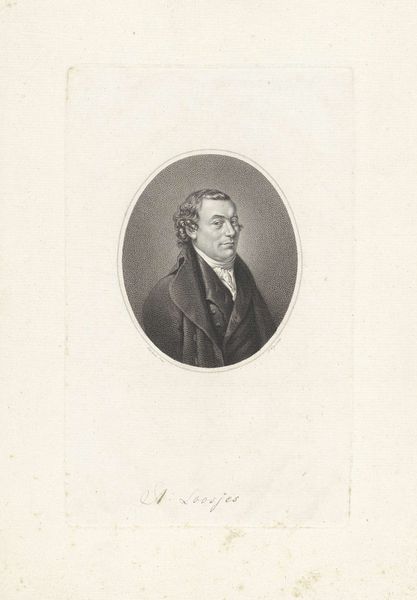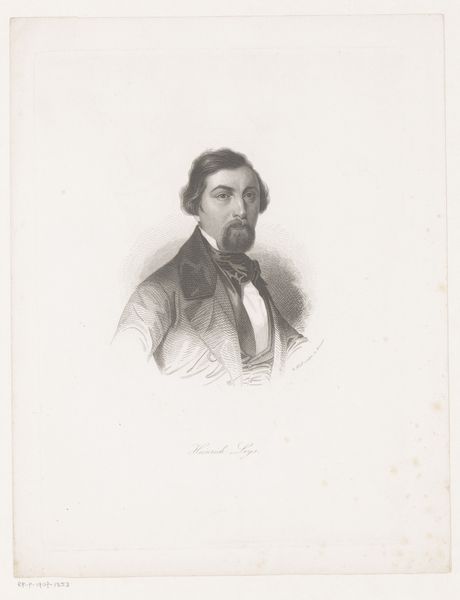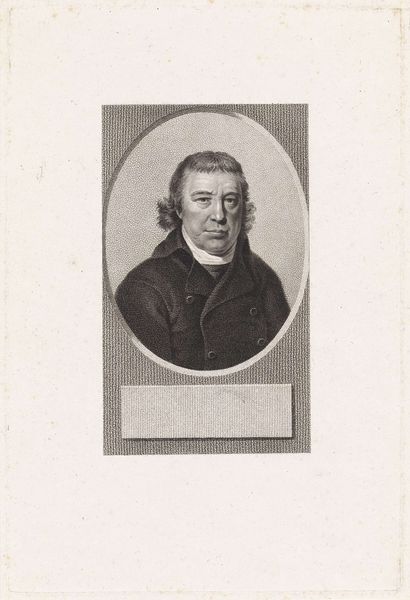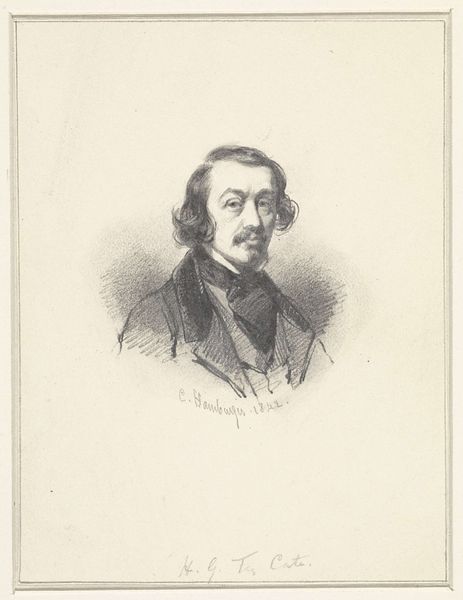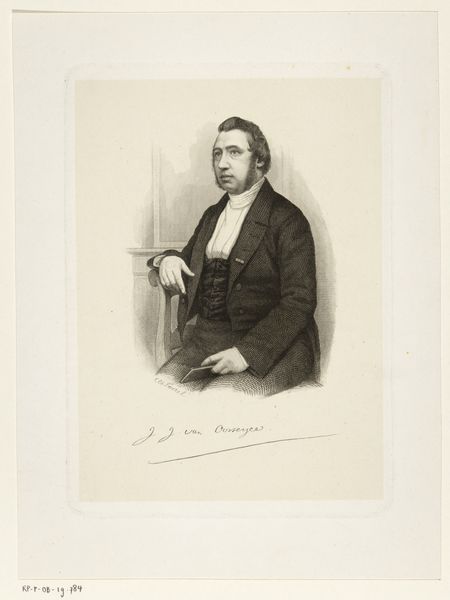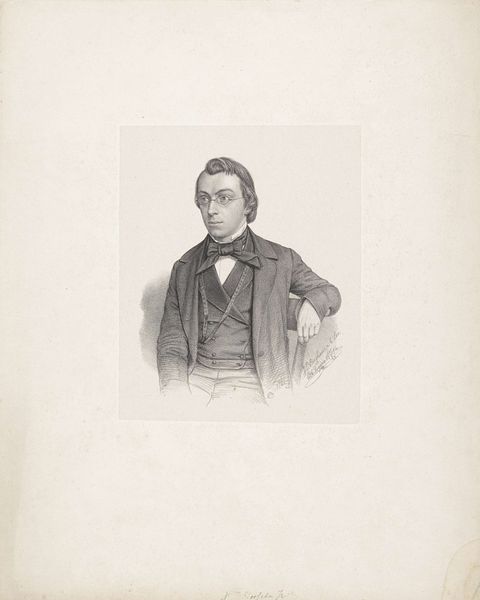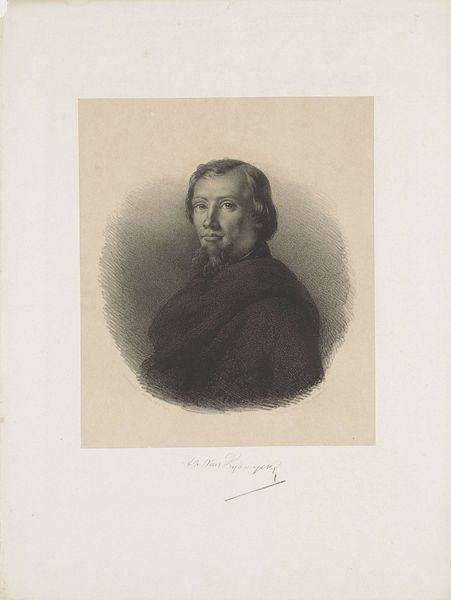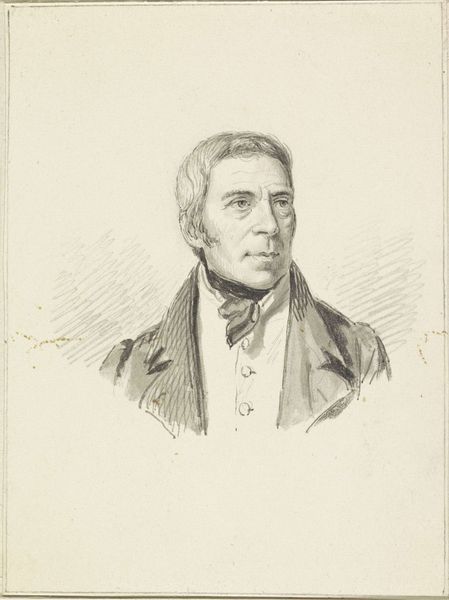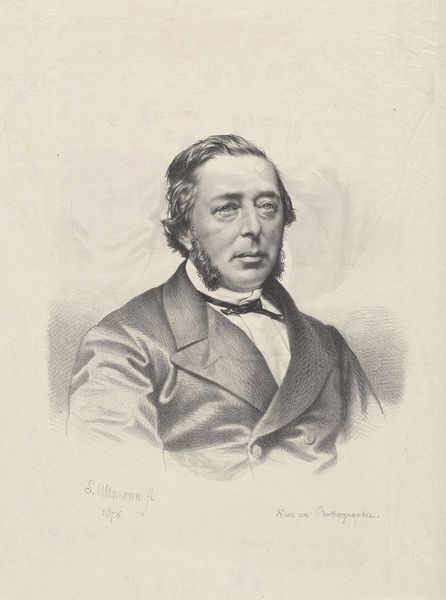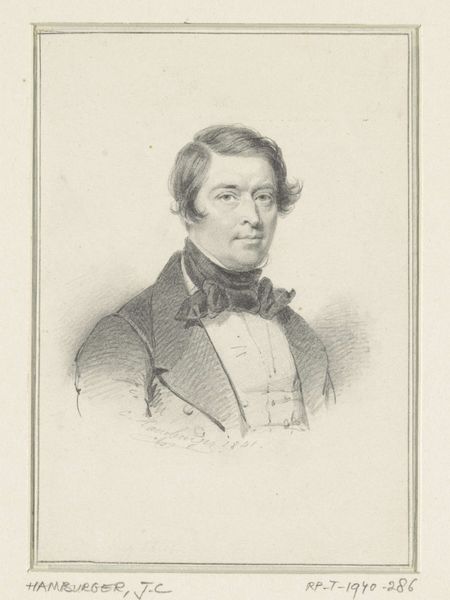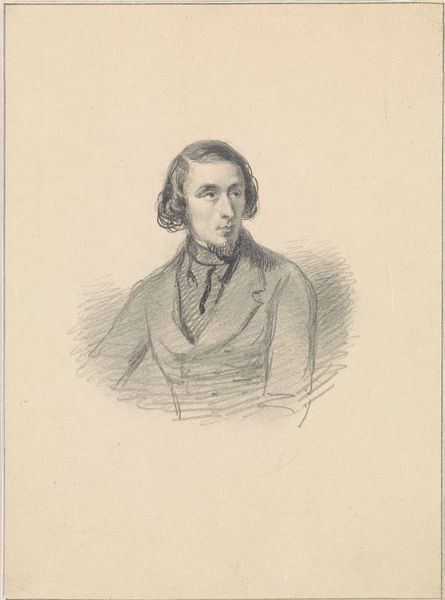
drawing, pencil
#
portrait
#
drawing
#
caricature
#
figuration
#
pencil drawing
#
romanticism
#
pencil
#
portrait drawing
#
academic-art
Dimensions: height 410 mm, width 323 mm
Copyright: Rijks Museum: Open Domain
Editor: So, this is Theodor Brüggemann’s "Portrait of an Unknown Man," possibly from 1849. It's a pencil drawing at the Rijksmuseum, and what strikes me is the sense of poised authority the subject projects. What’s your read on it? Curator: Well, considering the period – the late 1840s – Europe was rife with revolutionary fervor. While this is a portrait in the style of Romanticism and Academic art, the “unknown man” becomes intriguing. Who gets to have their portrait drawn? Was this portrait commissioned or part of a larger series? The 'unknown' aspect plays into the broader questions about social representation and visibility in art. Editor: That makes sense. I guess I just saw it as a straightforward portrait, but now I’m thinking about who *isn’t* represented. What would a drawing like this have meant to its original audience? Curator: Good question! The medium of pencil drawing suggests this may have been more of a study or preparatory sketch. During this time, art academies shaped artistic styles, yet caricature started challenging that formalism, playing on social and political critique. This "unknown man," perhaps an everyman in finery, offers some subversive qualities. Does the unknown-ness, coupled with portraiture conventions, suggest anonymity or maybe even universality? Editor: So it could be about the social politics of portraiture itself, beyond just this particular man? I hadn't thought of it that way. Curator: Exactly! Consider the politics of imagery – who is deemed worthy of artistic representation? How do these depictions uphold or challenge the status quo? The work asks, intentionally or unintentionally, who is made visible and what narratives are amplified by institutional display? Editor: It's fascinating how much history is embedded in what seems like a simple drawing. I’ll definitely be looking at portraits differently now! Curator: I agree. Art holds narratives of more than the artwork itself: who made it, who chose it, and who consumed it within larger networks of culture, values and historical institutions.
Comments
No comments
Be the first to comment and join the conversation on the ultimate creative platform.
